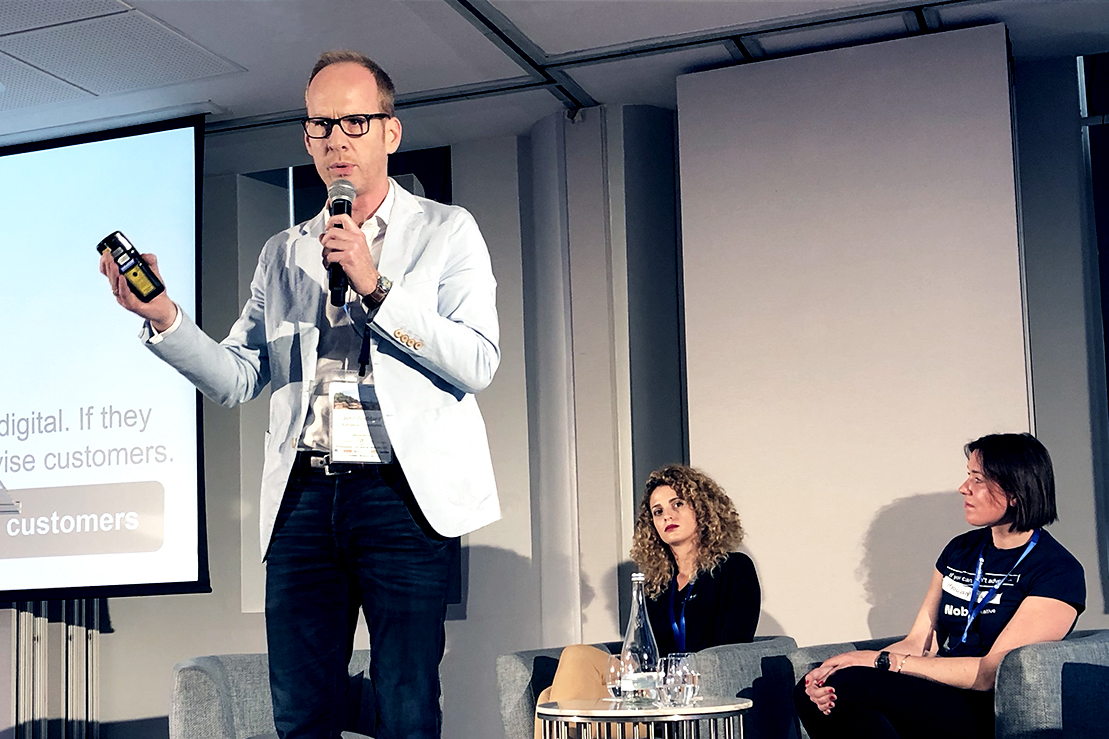
09/12/2019 by Guest post by John Goddard, CEO at Herold/European Directories
8 changes legacy businesses should make to better serve SMBs
Guest blog post by John Goddard, CEO at Herold & European Directories. This blog post is based on my presentation at the Siinda Local Search Summit 2019 where I was asked to present on whether legacy businesses, such as Yellow Pages and publishers, can compete with digital agencies in serving SMBs.
For the past decade, legacy businesses have been undergoing the transformation from print to digital. But what existing assets can legacy businesses leverage to win over the trust of SMB clients? And what changes are critical to keep in mind to be competitive in the SMB market?
Your assets
As a legacy business, you have three assets which all start-ups and digital agencies envy:
(1) A trusted brand. Legacy businesses have dusty brands. But these dusty brands have value in the B2C and B2B markets. In the age of fake news, GDPR, Facebook & Google data scandals, a modernized, local brand most consumers grew up with has real legs.
(2) SMBs, which will talk to you. You have an existing customer base. They may not all be over the moon with current product performance or service delivery, but it’s much easier to book an appointment with an existing customer, than it is to convert a cold call.
(3) A trained sales force. Recruiting, training and getting your a sales person to productivity is a wildly expensive exercise. Just ask Groupon and Reach Local. Turnover of new sales hires (combined regretted & non-regretted) for most organizations is higher than 50%, meaning acquiring a talented sales person will likely run you somewhere north of EUR 75k all in. Having some sales people you’re willing to bet the company’s future on is a huge advantage for the incumbents.
8 changes you need to make
Now let’s focus on (my view of) the changes that legacy businesses need to make:
1. Sell products you’d buy yourself: There’s a difference between products which are good for customers, and products customers will buy. Sell products that deliver concrete, provable value...ones that you’d push people out of the way to buy if you were an SMB. Do an NPS among your own sales people on your own products. It may scare the hell out of you.
2. A lot of your sales people won’t make the cut: Most print people don’t and won’t sell digital. If they don’t or
won’t, your company can’t advise customers. Here are some worrying signs:
- Not being able to explain simply how an SMB’s customers search, which criteria are important in their decision-making and how that impacts the SMB’s investment.
- Not being able to summarize simply an SMB’s current online performance
- Not being able to explain simply the difference between SEA & SEO
- Not being able to explain simply how SEA works
3. Neither will alot of your other people: Stop finding jobs for people. Find people for jobs. The Head of IT can’t run Product. The Customer Service Team Lead can’t design fulfilment processes. You need (a lot) more vertical expertise now. From UX to CRO to SEO to data analysts, vendor managers and experienced product development people...the crew that got the phone book out the door for years can’t deliver your digital implementation.
4. Admit your named search traffic is going to zero: That’s >60% of your traffic. Now what? Here’s the story:
- GMB is stealing all your directory’s named search (“Dentist John Goddard”) traffic. Not only because GMB is pretty good, but primarily because the lion’s share of your traffic is coming through Google, which makes GMB one click sooner for the consumer. Your branded traffic began a quick death years ago.
- So, firstly, you need to pivot (I hate the word, too, but it works here) to focus on conversions generated by your directory. Stop talking about traffic - it was always the wrong performance KPI anyway. SMBs want calls. Period. And if your directory is average you’re delivering a conversion rate several times higher than the best SEA campaigns.
- And, secondly, focus all your resources on driving organic rankings for generic search (“Dentist Vienna 6th district”).
5. You need to (re)develop your own products: Most legacy businesses wrote off the consumer years ago. That’s why too many directories make Craigslist look like award-winning UX. How are you using the data anaylzed from A/B testing to consistently improve your CRO? How are you packaging the data you have about SMBs to make consumers’ decision easier? What new product sare you developing to facilitate the search process? Assume Thumbtack, Porch,Amazon Home Services, et al are coming for you. Because they are. ANGI bought Werkspot, MyHammer, Travaux and MyBuilder. They’re not playing around.
6. Be in a position to afford to sell third-party products…like your life depends on it. Google rules. There’s no way around it. Facebook may become important. Your presence solution, website partner and SEO outsourcer will cost you margin. Get happy with being reliant on third-party products and vendors.Hard choices to create a leaner operational cost structure is the only way you can afford it, though.
7. Don’t kid yourself with the numbers: Giving stuff away doesn’t (and won’t) make you digital. Bundling an online presence product with print and allocating revenue overwhelmingly to online doesn’t make you digital. Sell your products based on their merit, not for a press release or the auditor.Lots of incumbents have learned the mortal dangers of fooling themselves the hard way.
8. It’s still about the customer. Get sidetracked with IT migrations, or define customer service & fulfilment as a cost centre at
your peril. SMBs still want a trusted advisor. They still would prefer a 1-stop-shop. But the world where you own the only phone book or the only relevant directory are very much long gone. In future your products will deliver comparable performance to your competitor’s. Welcome to a world in which SMB loyalty is driven by service, product integration and your ability to simply communicate how you’re making your customers’ phones ring.
